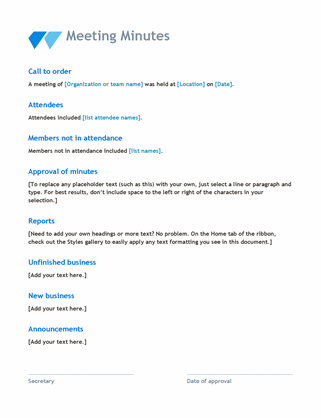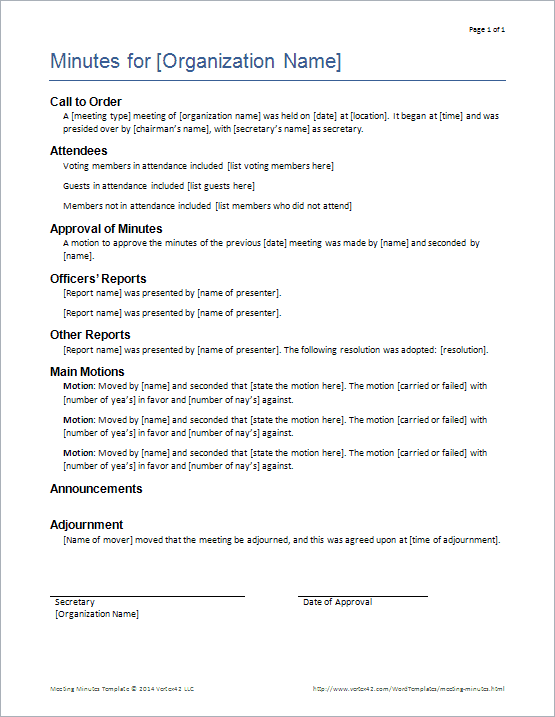

There’s always an underlying purpose of a meeting being called. Here are a few good reasons why meeting minutes enhance the way you meet: Capture the overall purpose of meeting Not only are meeting minutes used to benchmark key topics discussed in meetings, they are also used as records so that anyone not on the call or in the meeting room can catch up on what was discussed, minus the bias and small talk. This condensed document also suggests what topics to revisit and inform future decisions in follow-up meetings. Meeting minutes allow people who didn’t attend the meeting to get caught up on what was discussed. If your company needs assistance creating or managing your minutes, you can work with an online service provider.Meeting minutes are the tangible records taken in a meeting that are used to inform attendees and nonattendees of what was discussed during the meeting and define the required next steps to keep the conversation or project on track. Meeting minutes are an important record that keep your business on track and organized. For example, if a new product is discussed at several points in the meeting, it's best to sum up all of the related decisions or actions in one section.

Record the outcome of any votes taken as well who made the motions and who seconded them.Describe all of the decisions made at the meeting.Mention any documents handed out at the meeting and store a copy with the minutes.

Record any amendments or corrections that are made to minutes from previous meetings.Use the same naming convention for all minutes files and, if possible, store them in a designated folder so they can be easily located.Use the meeting agenda as the outline for the minutes.List all the meeting attendees as well as those who were invited but could not attend.Include the date and time of the meeting.Create typed, electronic minutes that are stored in the cloud.Here are some of the most common tried and true methods for creating effective meeting minutes: To make the most effective use of your meeting minutes, follow these tips. These notes document what happened in a meeting and provide a reminder going forward of decisions that were made or actions to be taken. That's why keeping meeting minutes is a best practice for business meetings.


 0 kommentar(er)
0 kommentar(er)
